Abstract
Two eight-member equivalence classes of visual stimuli were established during three phases of a training program. In Phase 1, two training arrangements were compared. In one, 3 subjects were taught on different trials to select from a single pair of comparison stimuli (A1, A2) in response to eight sample stimuli that were trained in pairs (B1, B2; C1, C2; D1, D2; E1, E2). In the second arrangement, subjects were taught to select from four pairs of comparisons (B1, B2; C1, C2; D3, D2; E2, E2) in response to two samples (A1, A2). Training with the single pair of comparison stimuli resulted in the development of equivalence relations (B1C1, B2C2, D1B1, D2B2, B1E1, B2E2, C1D1, C2D2, C1E1, C2E2, D1E1, D2E2, and their reciprocals) between the sample stimuli without direct training of these relations. In the other training arrangement, these relations among the comparison stimuli developed in the performance of 1 subject only. In Phase 2, three new pairs of stimuli (F1, F2; G1, G2; H1, H2) were substituted for three of the original pairs (B1, B2; C1, C2; D1, D2) and the training arrangements for the groups were reversed. Following training, the performances that showed equivalence relations on the probes in the first phase also showed equivalence relations in the second phase. If such relations did not develop in the first phase, they did not do so in the second phase. In Phase 3, relations between stimuli across the two previous phases (e.g., B1F1, B2F2, B1G1, B2H2, C1F1, etc.) were investigated. The 4 subjects whose performances showed the development of these relations were taught to select one stimulus from each class (E1 and E2) in response to a verbal label (I1 and I2) and then were tested to see if the verbal label controlled responding to the remaining members of the class (e.g., I1A1, I2A2, I1B1, I2B2, etc.). For 3 subjects, this generalized control occurred; for the 4th, generalization occurred only after verbal training with a second pair of visual stimuli (F1 and F2). In retests several months later, these auditory-visual relations were found to be intact or, if not, were recovered without direct training.
Full text
PDF
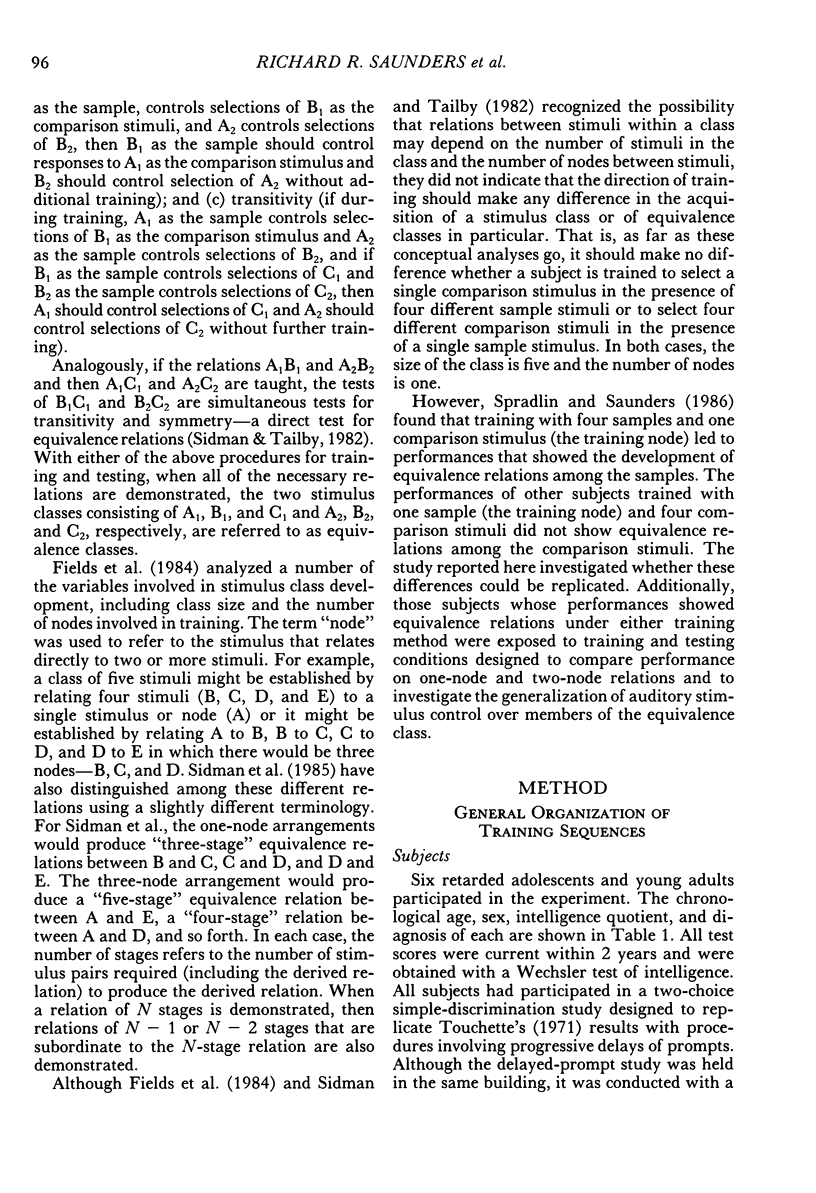
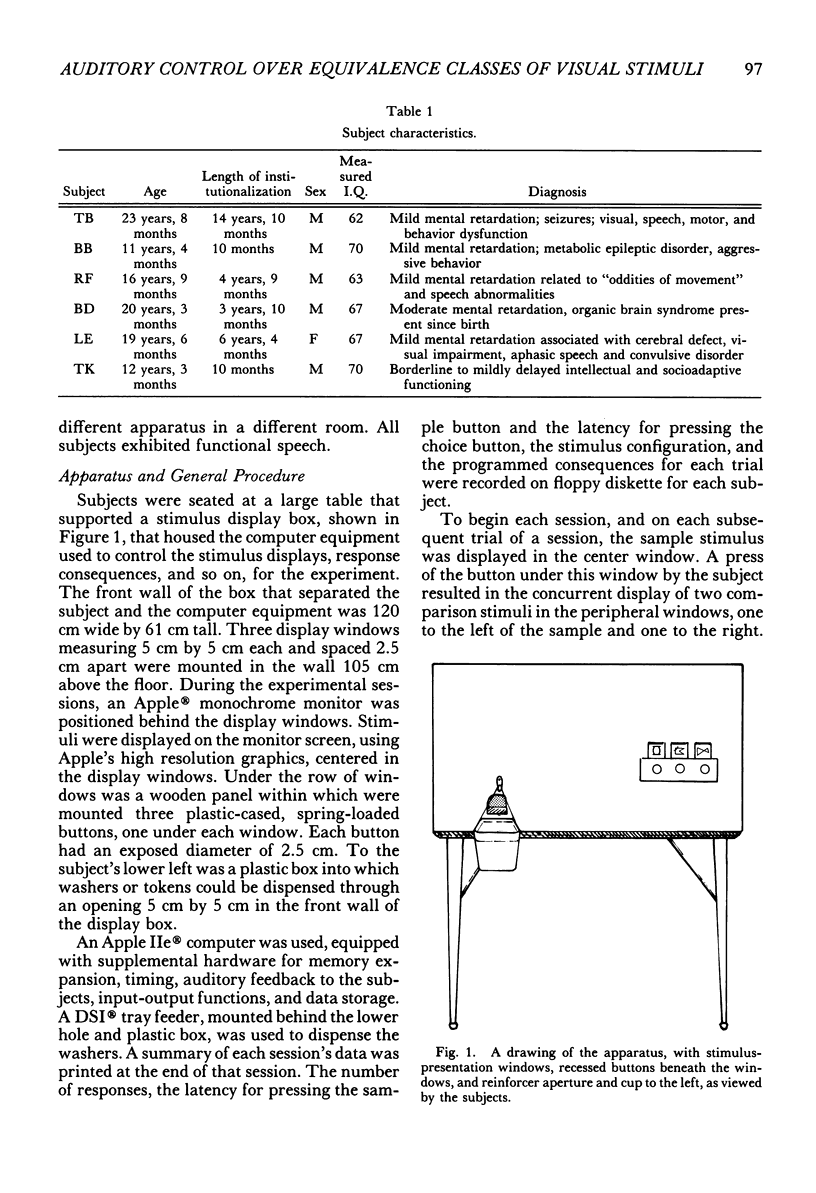
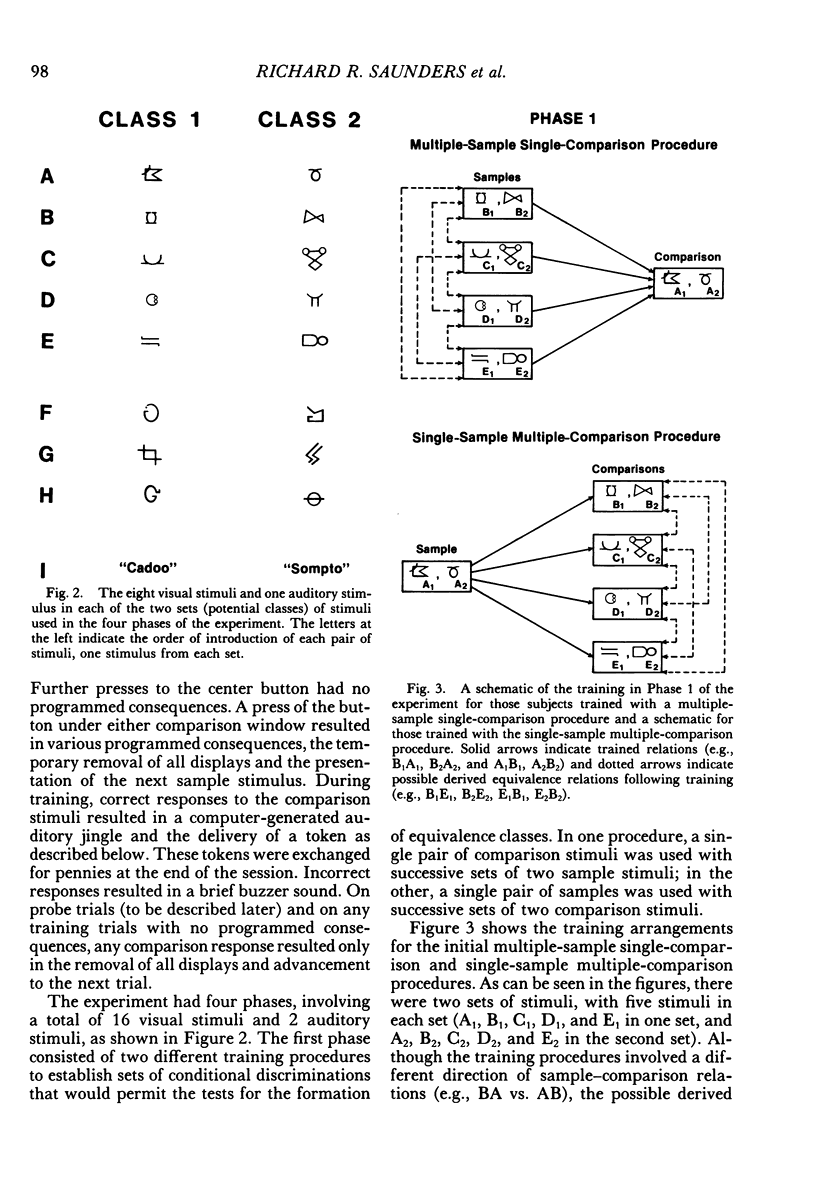
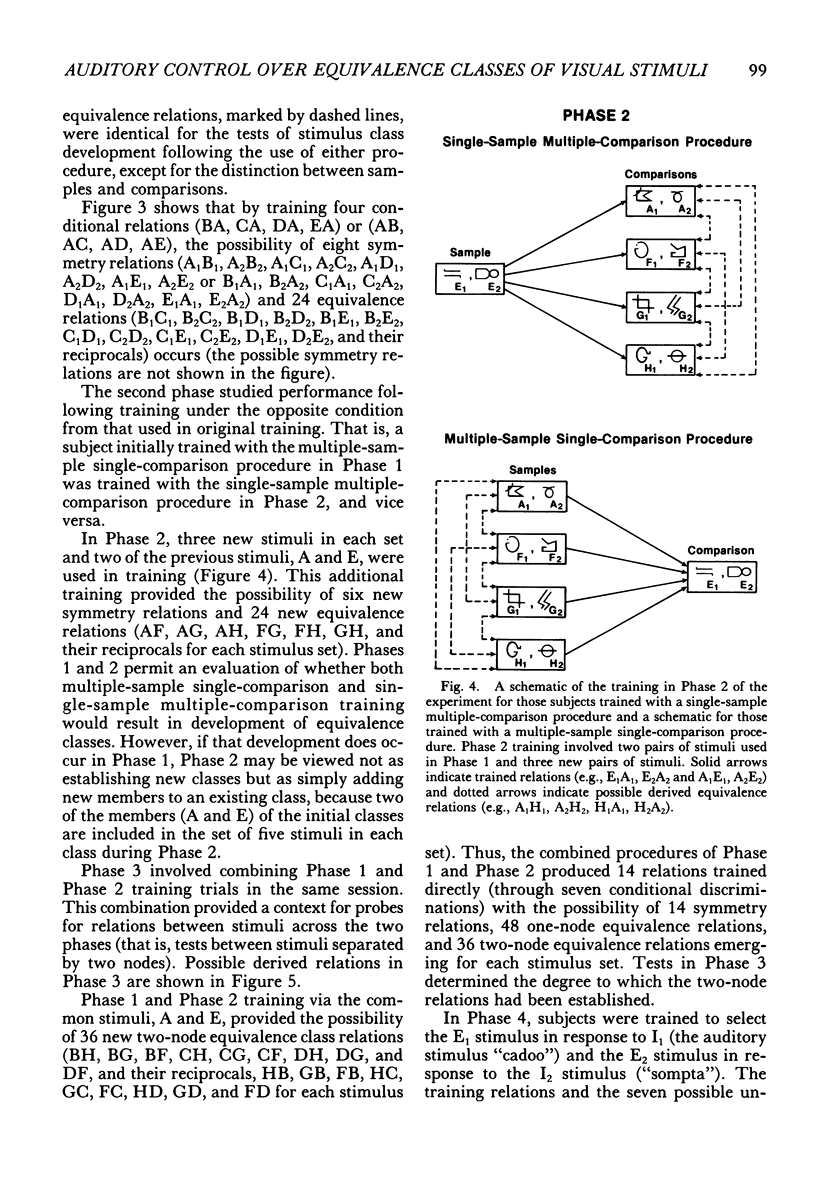
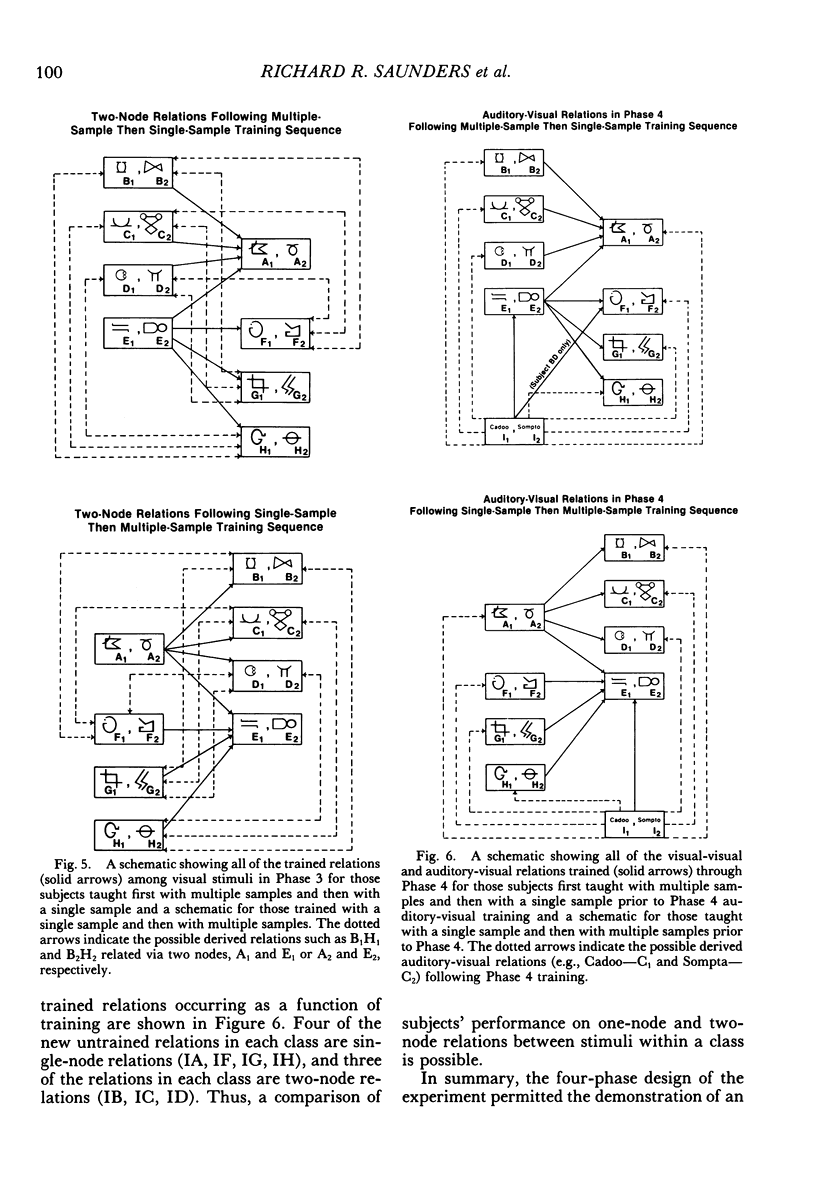
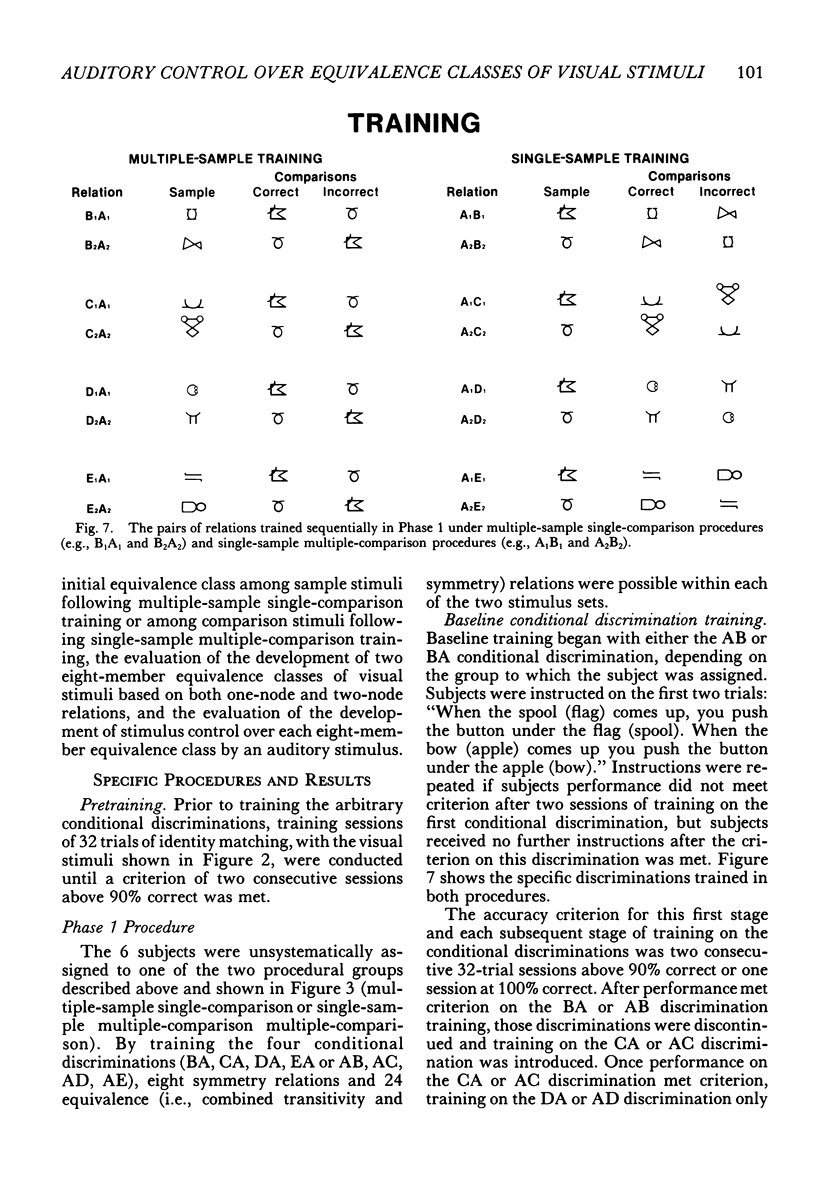
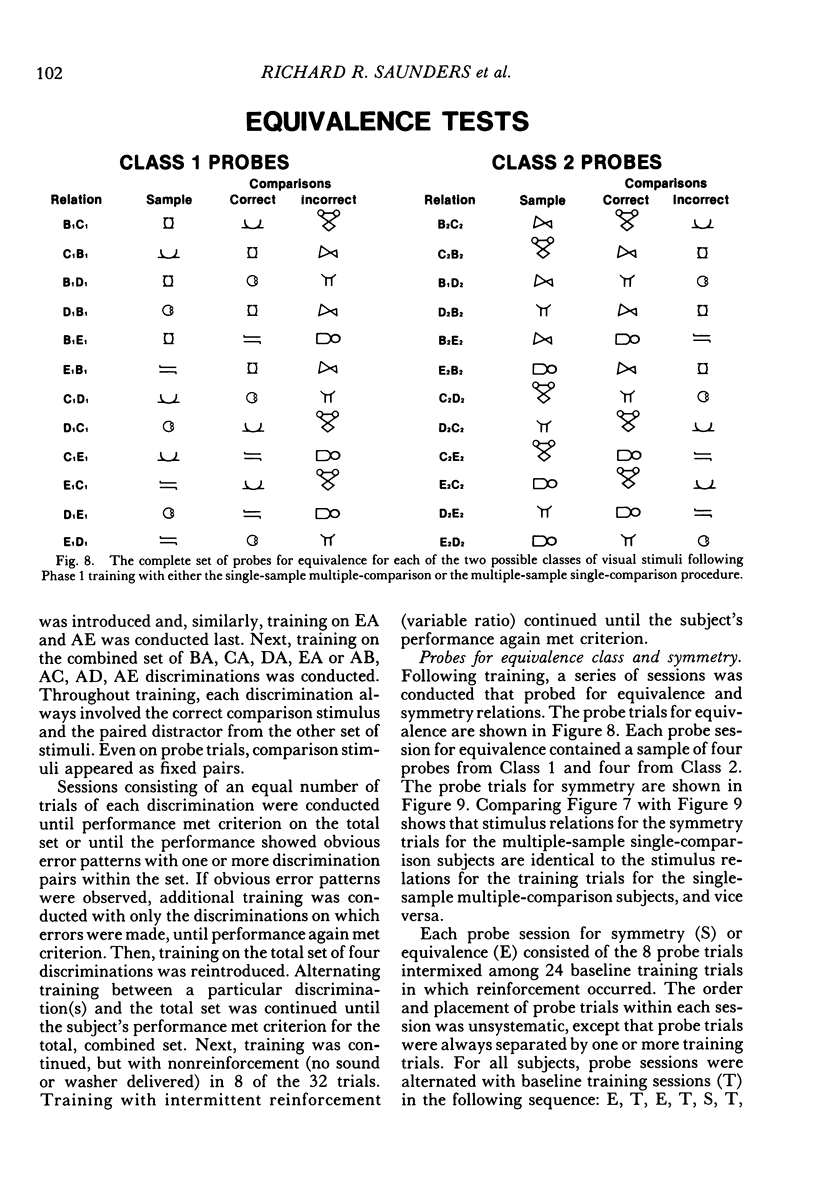
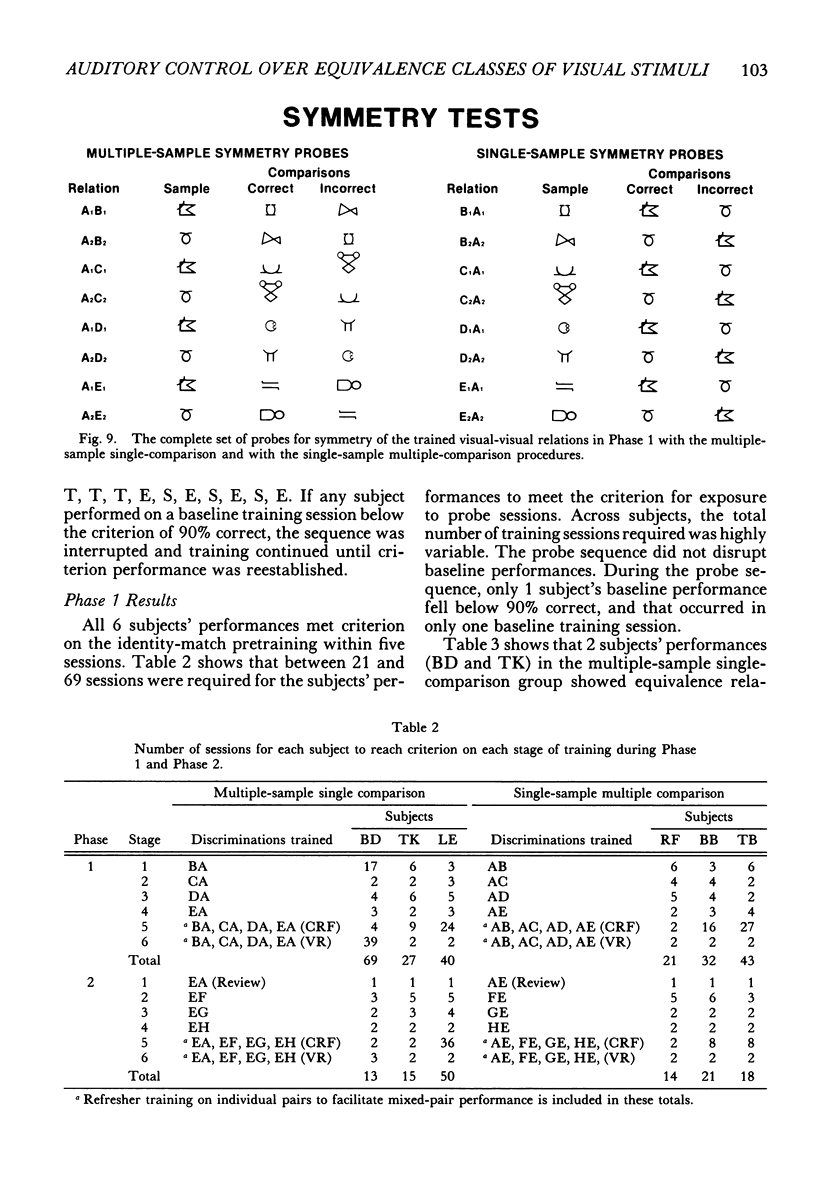
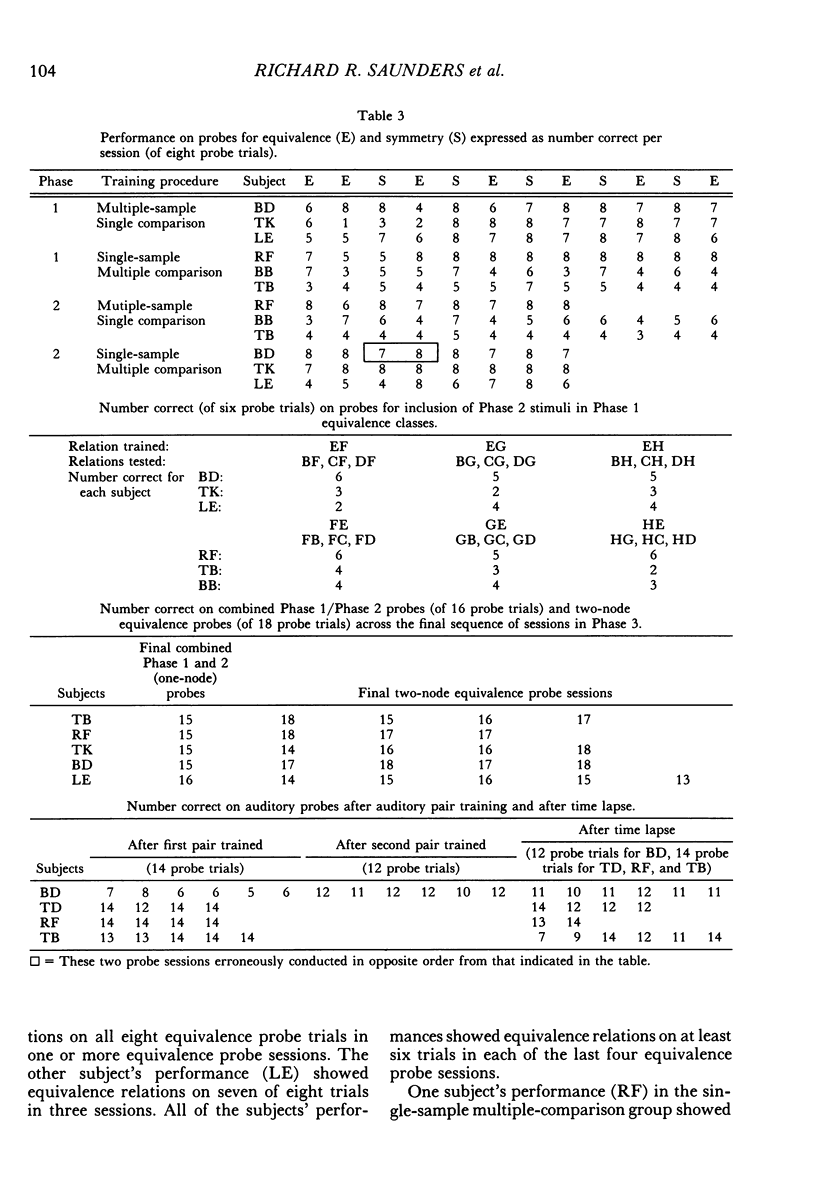
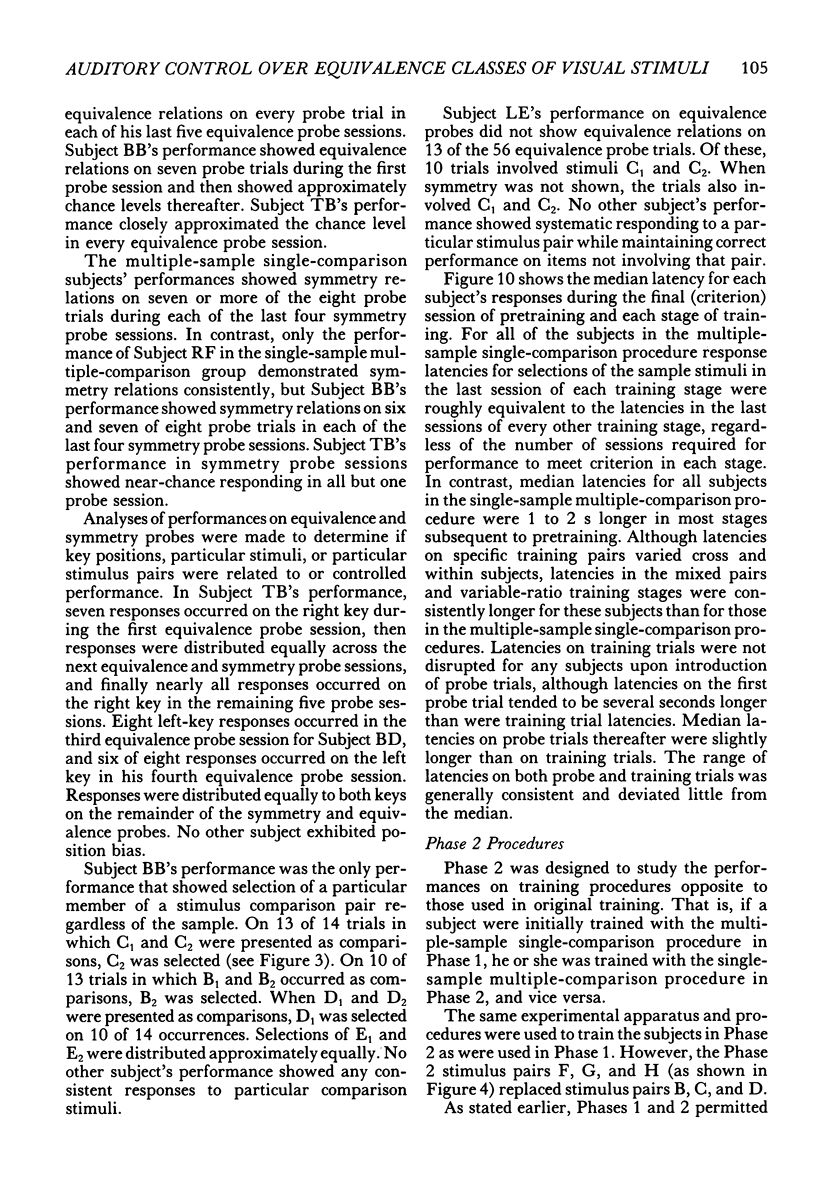
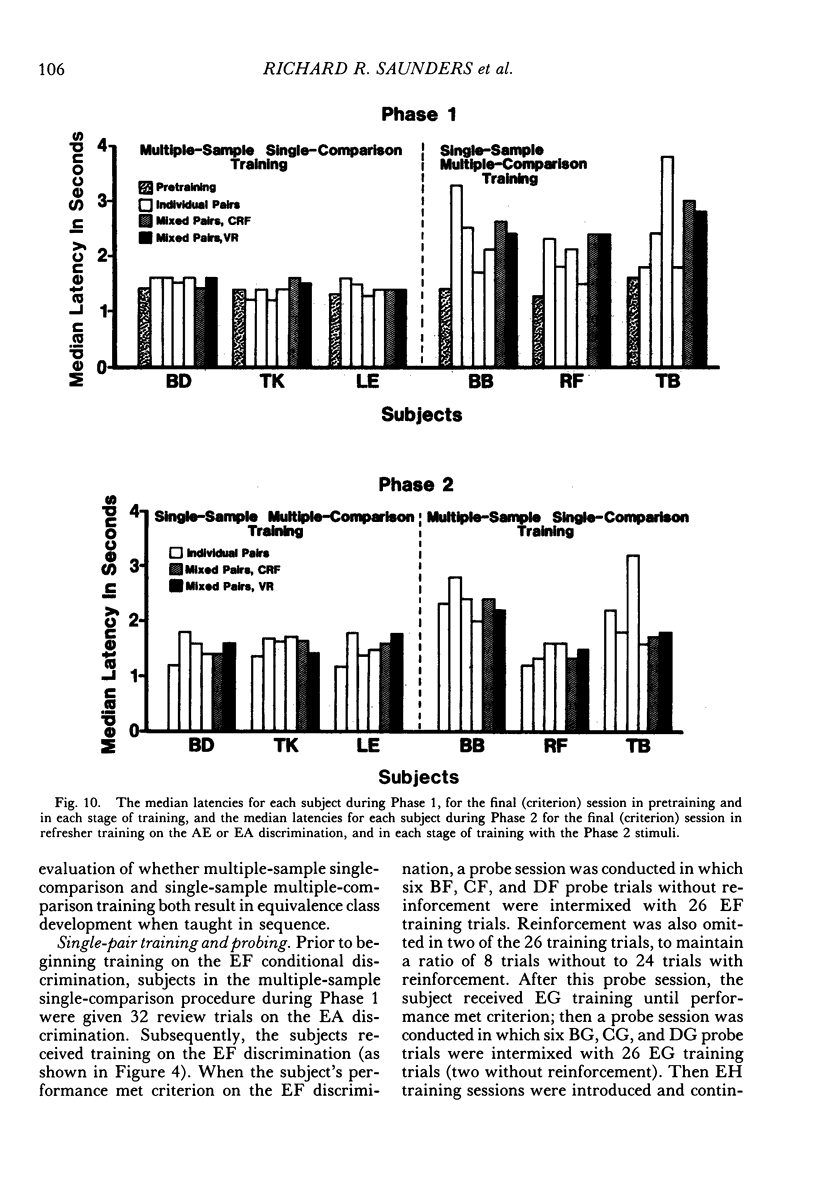
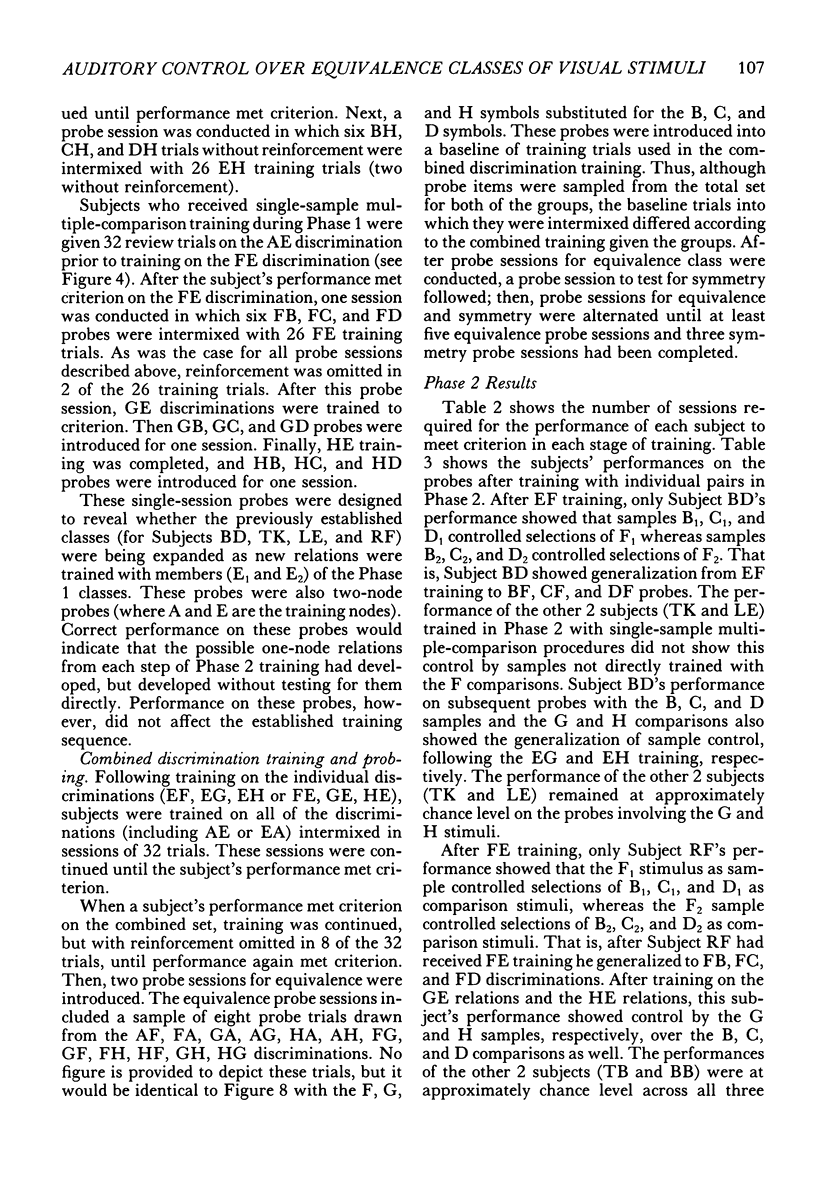
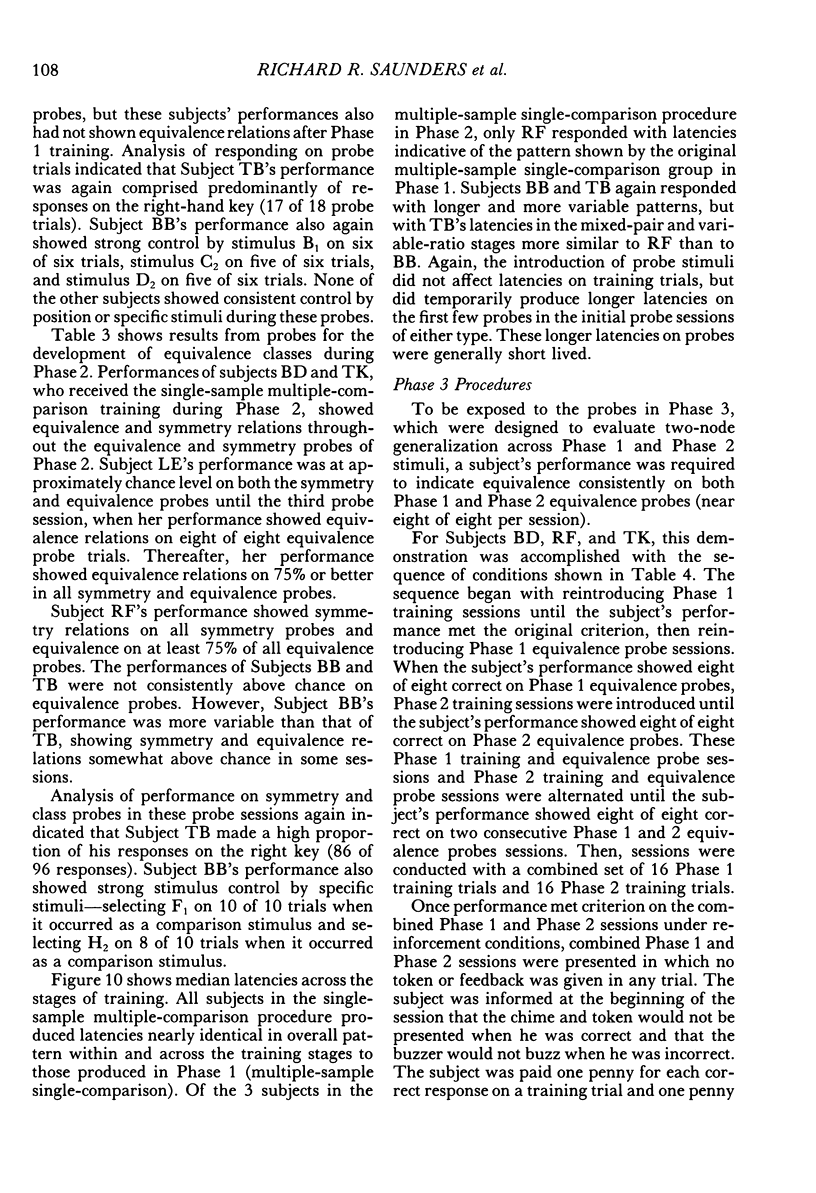
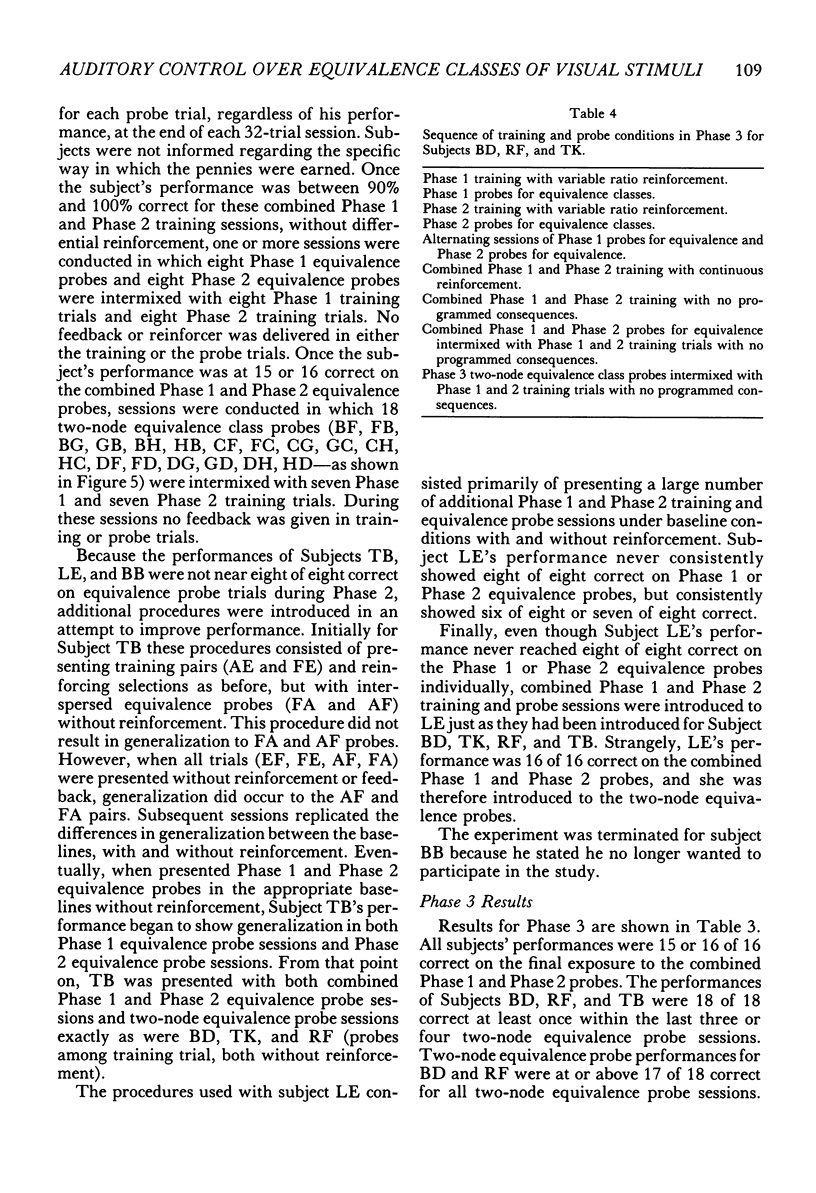
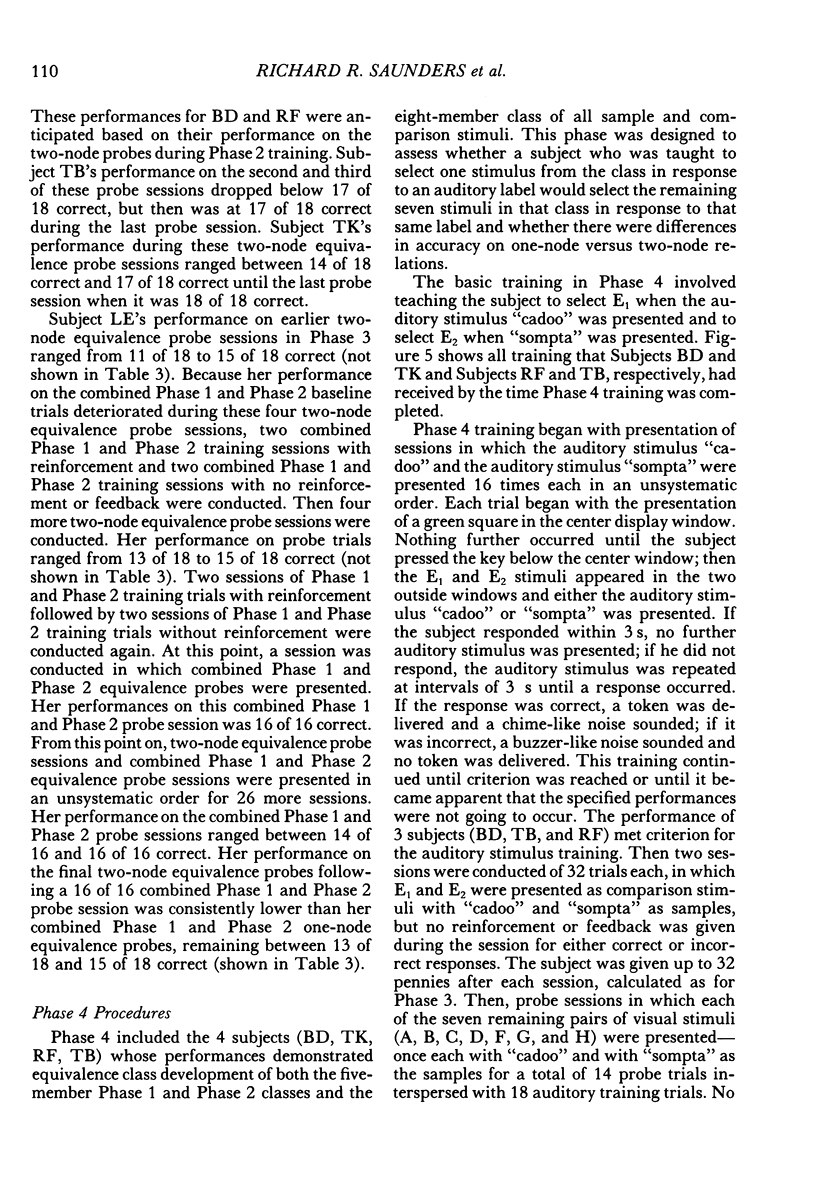
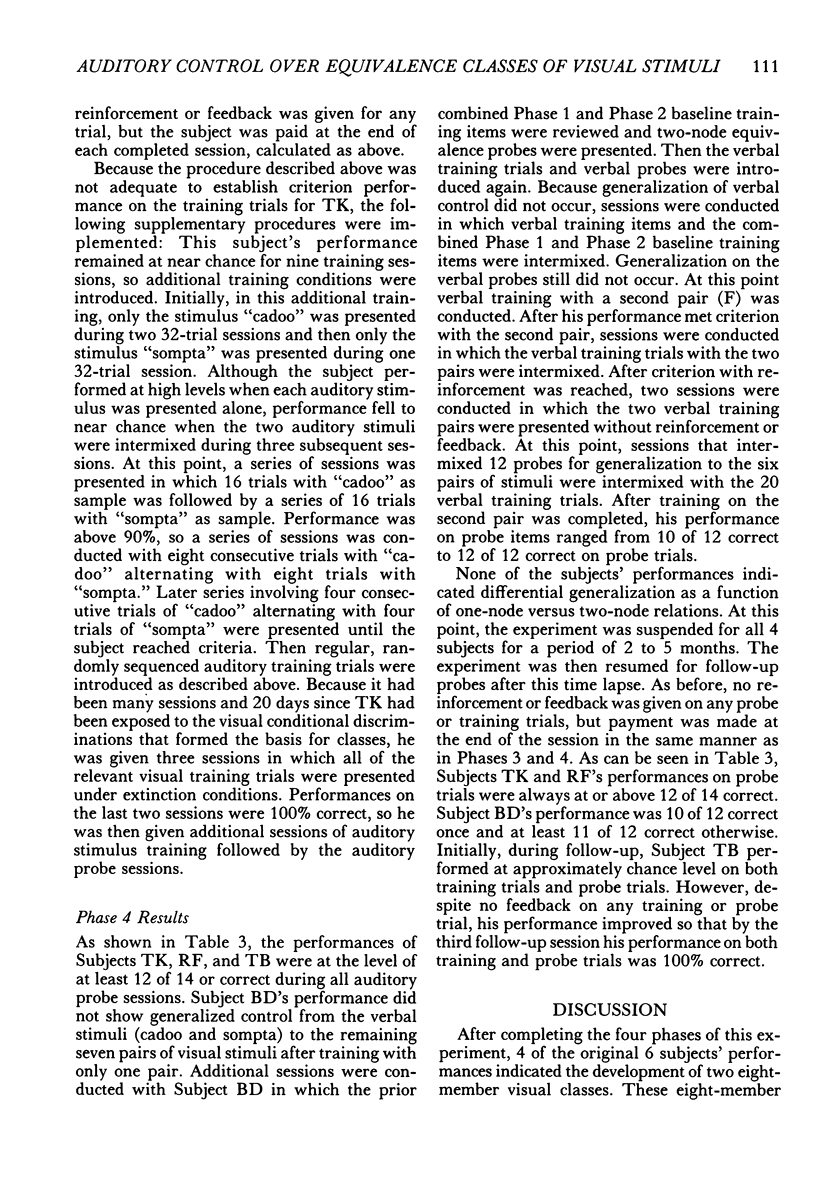
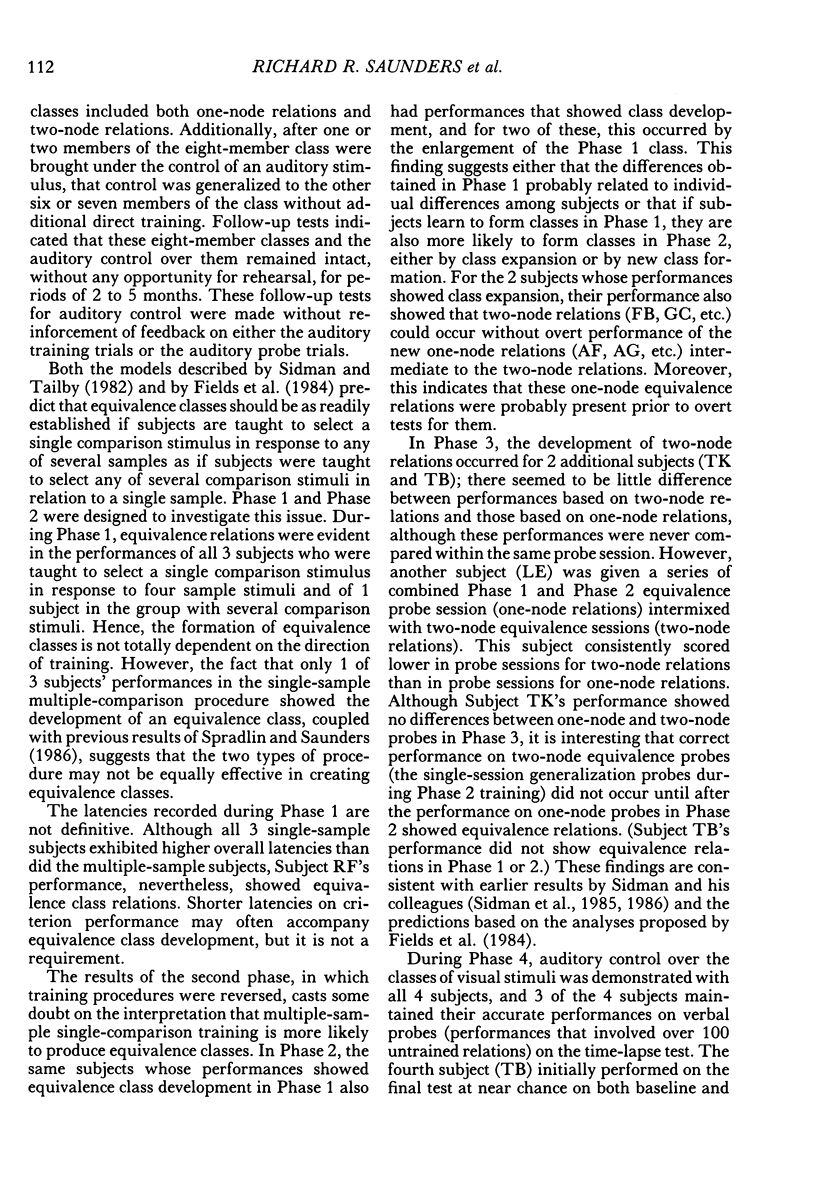
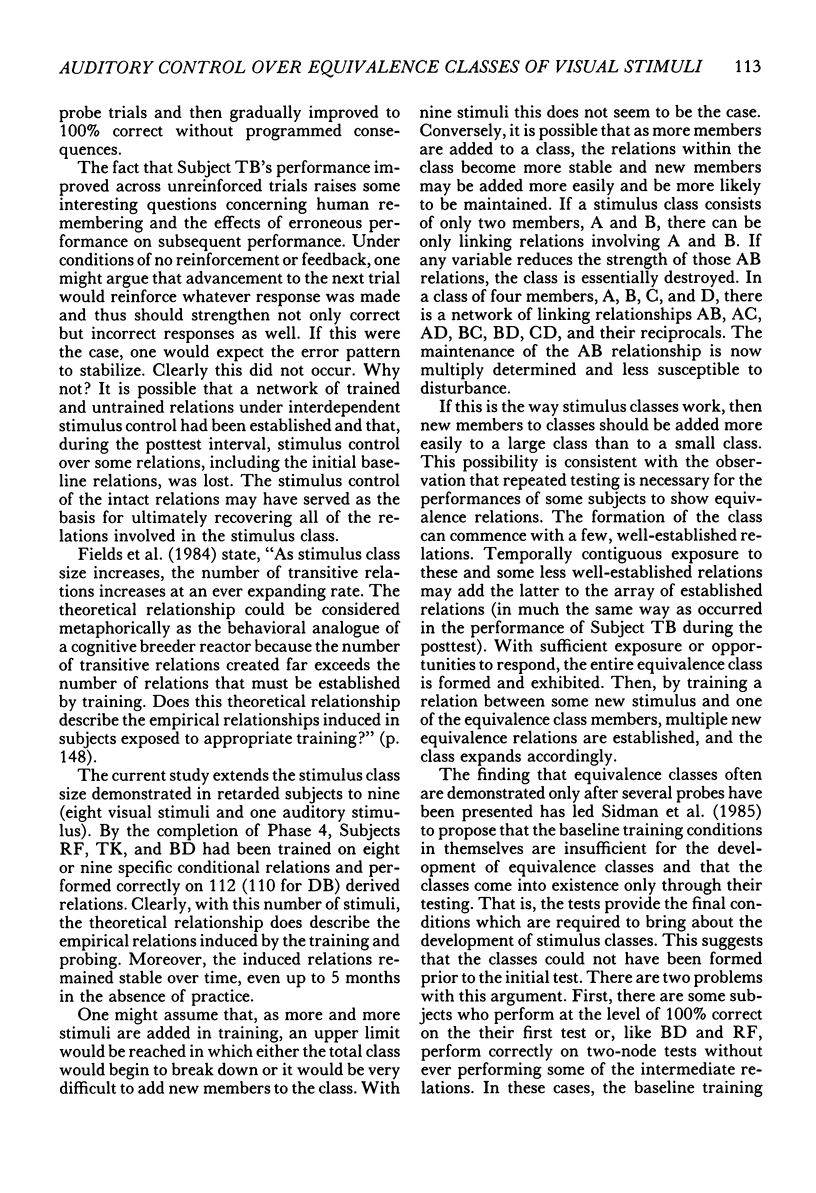
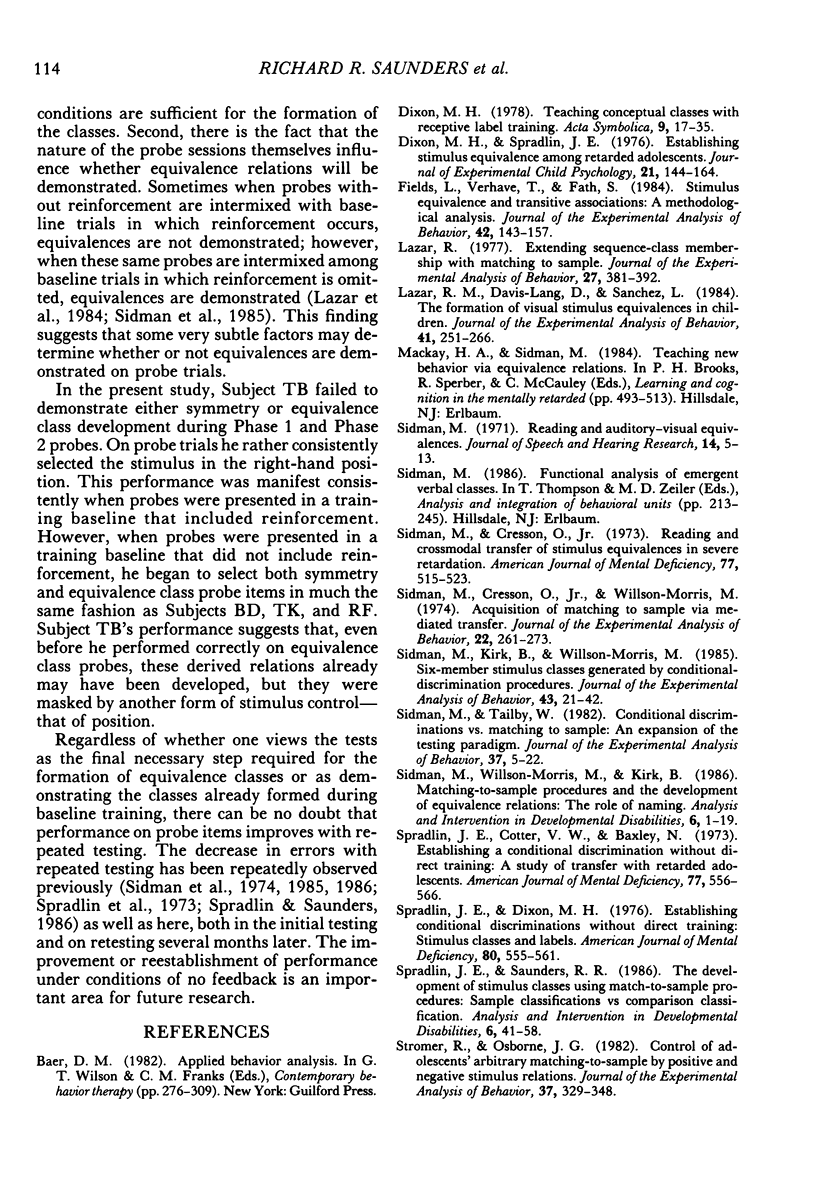

Selected References
These references are in PubMed. This may not be the complete list of references from this article.
- Dixon M., Spradlin J. Establishing stimulus equivalences among retarded adolescents. J Exp Child Psychol. 1976 Feb;21(1):144–164. doi: 10.1016/0022-0965(76)90064-3. [DOI] [PubMed] [Google Scholar]
- Fields L., Verhave T., Fath S. Stimulus equivalence and transitive associations: A methodological analysis. J Exp Anal Behav. 1984 Jul;42(1):143–157. doi: 10.1901/jeab.1984.42-143. [DOI] [PMC free article] [PubMed] [Google Scholar]
- Lazar R. M., Davis-Lang D., Sanchez L. The formation of visual stimulus equivalences in children. J Exp Anal Behav. 1984 May;41(3):251–266. doi: 10.1901/jeab.1984.41-251. [DOI] [PMC free article] [PubMed] [Google Scholar]
- Lazar R. Extending sequence-class membership with matching to sample. J Exp Anal Behav. 1977 Mar;27(2):381–392. doi: 10.1901/jeab.1977.27-381. [DOI] [PMC free article] [PubMed] [Google Scholar]
- Sidman M., Cresson O., Jr Reading and crossmodal transfer of stimulus equivalences in severe retardation. Am J Ment Defic. 1973 Mar;77(5):515–523. [PubMed] [Google Scholar]
- Sidman M., Cresson O., Jr, Willson-Morris M. Acquisition of matching to sample via mediated transfer. J Exp Anal Behav. 1974 Sep;22(2):261–273. doi: 10.1901/jeab.1974.22-261. [DOI] [PMC free article] [PubMed] [Google Scholar]
- Sidman M., Kirk B., Willson-Morris M. Six-member stimulus classes generated by conditional-discrimination procedures. J Exp Anal Behav. 1985 Jan;43(1):21–42. doi: 10.1901/jeab.1985.43-21. [DOI] [PMC free article] [PubMed] [Google Scholar]
- Sidman M. Reading and auditory-visual equivalences. J Speech Hear Res. 1971 Mar;14(1):5–13. doi: 10.1044/jshr.1401.05. [DOI] [PubMed] [Google Scholar]
- Sidman M., Tailby W. Conditional discrimination vs. matching to sample: an expansion of the testing paradigm. J Exp Anal Behav. 1982 Jan;37(1):5–22. doi: 10.1901/jeab.1982.37-5. [DOI] [PMC free article] [PubMed] [Google Scholar]
- Spradlin J. E., Cotter V. W., Baxley N. Establishing a conditional discrimination without direct training: a study of transfer with retarded adolescents. Am J Ment Defic. 1973 Mar;77(5):556–566. [PubMed] [Google Scholar]
- Spradlin J. E., Dixon M. H. Establishing conditional discriminations without direct training: stimulus classes and labels. Am J Ment Defic. 1976 Mar;80(5):555–561. [PubMed] [Google Scholar]
- Stromer R., Osborne J. G. Control of adolescents' arbitrary matching-to-sample by positive and negative stimulus relations. J Exp Anal Behav. 1982 May;37(3):329–348. doi: 10.1901/jeab.1982.37-329. [DOI] [PMC free article] [PubMed] [Google Scholar]
- Touchette P. E. Transfer of stimulus control: measuring the moment of transfer. J Exp Anal Behav. 1971 May;15(3):347–354. doi: 10.1901/jeab.1971.15-347. [DOI] [PMC free article] [PubMed] [Google Scholar]
- Wetherby B., Karlan G. R., Spradlin J. E. The development of derived stimulus relations through training in arbitrary-matching sequences. J Exp Anal Behav. 1983 Jul;40(1):69–78. doi: 10.1901/jeab.1983.40-69. [DOI] [PMC free article] [PubMed] [Google Scholar]


